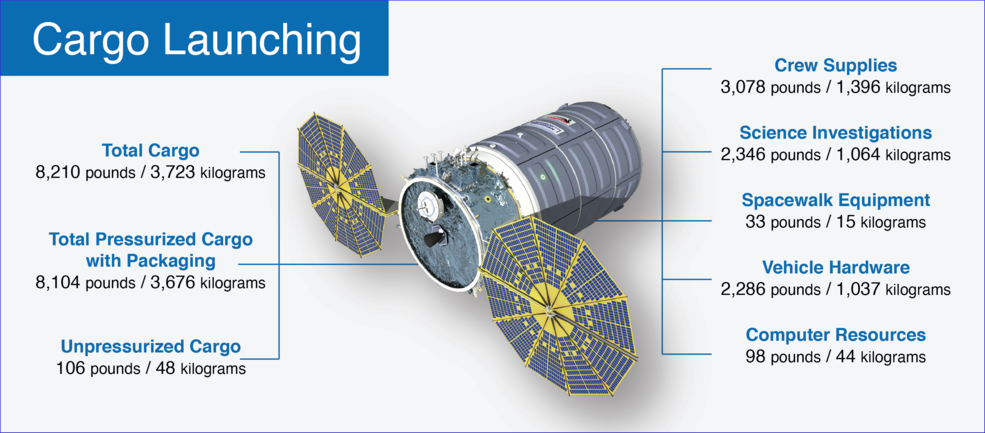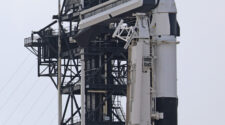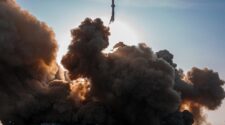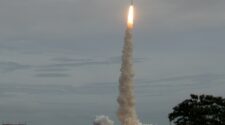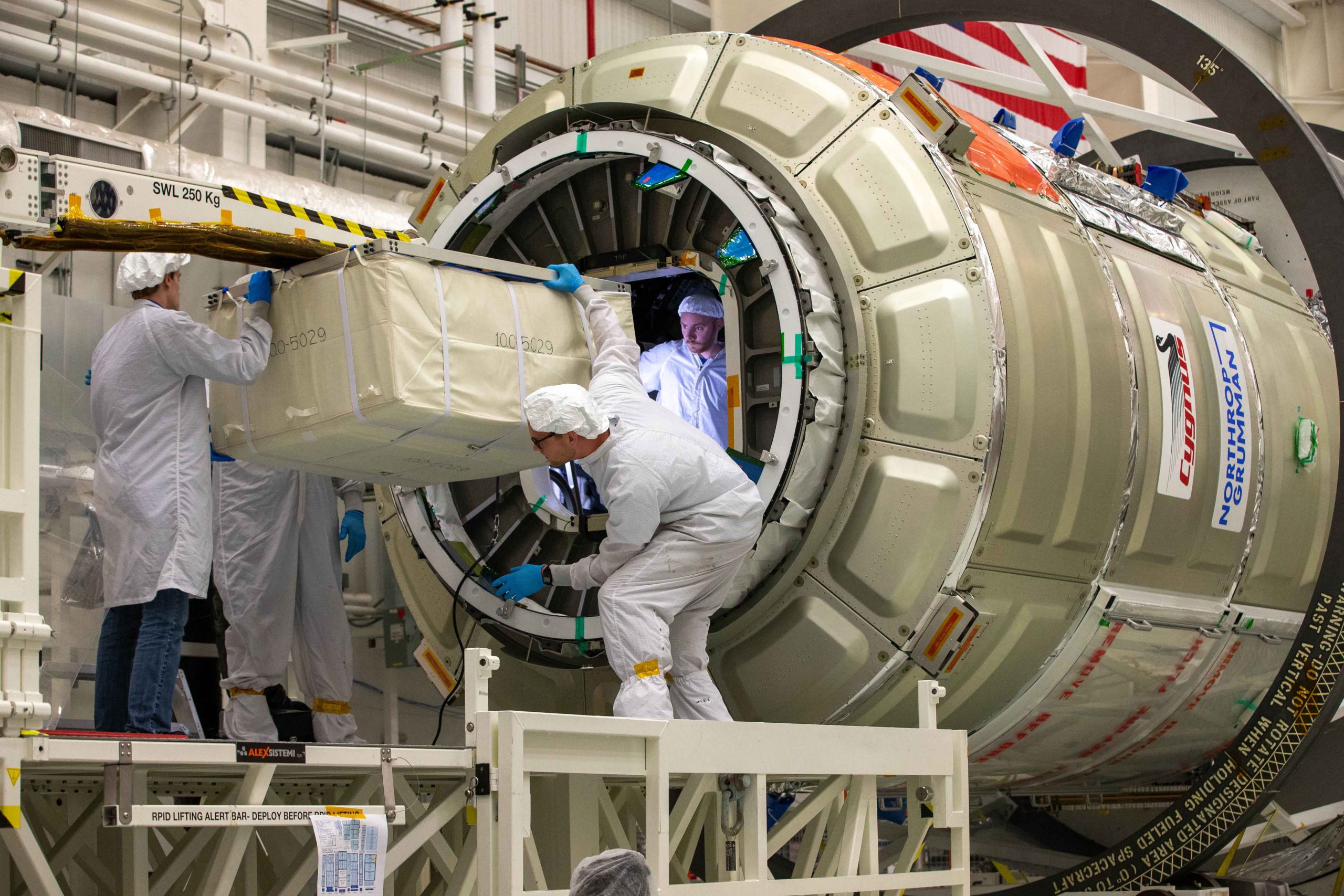
The 16th resupply mission by Northrop Grumman’s Cygnus spacecraft is currently targeted to lift off on August 10th at 5:56 p.m. from Pad-0A of the Mid-Atlantic Spaceport at NASA’s Wallops Flight Facility in Wallops Island, Virginia. On top of the Antares booster, the Cygnus spacecraft will carry more than 8,200 pounds of science and research, crew supplies, and vehicle hardware to the International Space Station (ISS).
The 139 foot tall Antares 230+ launch vehicle is a two stage system capable of lifting up to 17,636 pounds (8,000 kilograms) to low Earth orbit. This will be the fifth flight of the 230+ version of Antares. The first stage is powered by two NPO Energomash RD-181 engines burning Rocket Grade Kerosene and Oxygen. Each of the main engines reaching a maximum thrust of 432,106 pounds (196,000 KGF) at full throttle. The second stage is Northrup Grumman’s own Castor 30XL which is a solid fueled stage producing approximately 125,000 pounds of thrust (56,803 KGF).
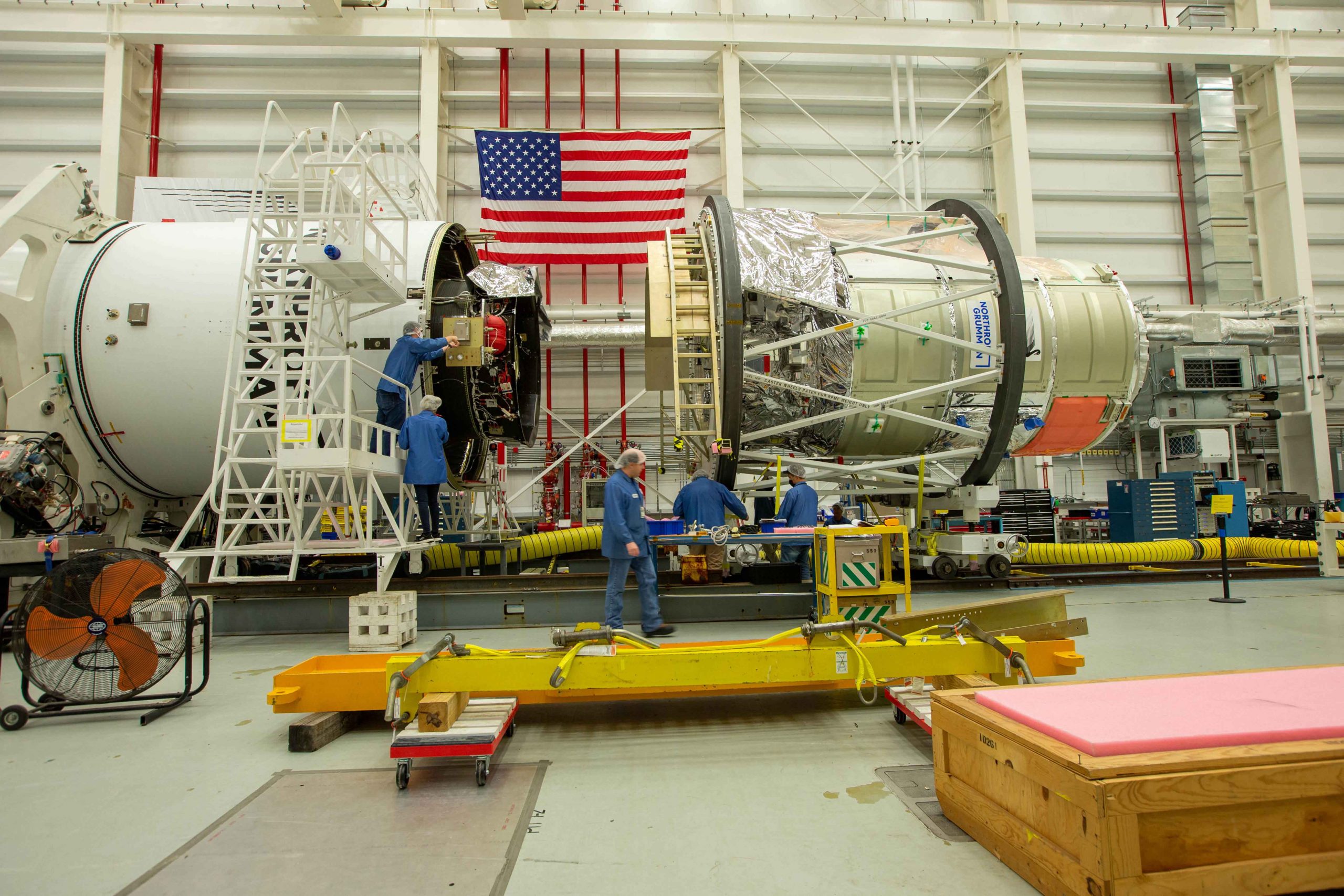
Assuming an on time launch on August 10th, the Cygnus spacecraft, named the S.S. Ellison Onizuka after the fallen Space Shuttle Challenger astronaut, will arrive at the ISS on Thursday August 12th. It will be berthed to the station using the Candarm2 with astronaut Megan McArthur at the controls. It will spend about three months docked to the station allowing the crew plenty of time to transfer the supplies and science from the spacecraft to the station, and then to fill it with items no longer needed. The spacecraft is not designed to be reusable and at the end of its mission the Cygnus spacecraft will burn up while reentering the Earth’s atmosphere.
So what’s on board ?
Aside from crew consumables such as food, water, clothing, and so on, there are science experiments, technology demonstrations, and new hardware packed into the Cygnus spacecraft.
One of the major items being hauled up to the ISS is the 4-Bed Carbon Dioxide Scrubber, a next-generation Environmental Control and Life Support System technology that will be tested on the ISS for the next year. Unlike the small scrubbers you may have seen the Apollo 13 crew changing out in the movie, this unit is quite large, about the size of a small refrigerator and weighing in the neighborhood of 450 pounds. The unit is based on the current on the current scrubber on the ISS that has been in use for 20 years. The unit’s purpose is to remove Carbon Dioxide from the atmosphere inside of the station and collect water vapor. The new unit has been redesigned to be easier to maintain and for improved reliability, features needed if the same technology is to be used aboard a lunar outpost or a journey to Mars. Donnie McCaghren, project manager for the system stated, “We reduced the scrubber’s power consumption, improved the thermal stability and lifespan of the adsorbent materials, and added replaceable filters, more durable valves, and protective covers for the valve motors.”
After completing the initial year of testing, the unit will be incorporated into the station’s closed-loop recycling system for at least three years.
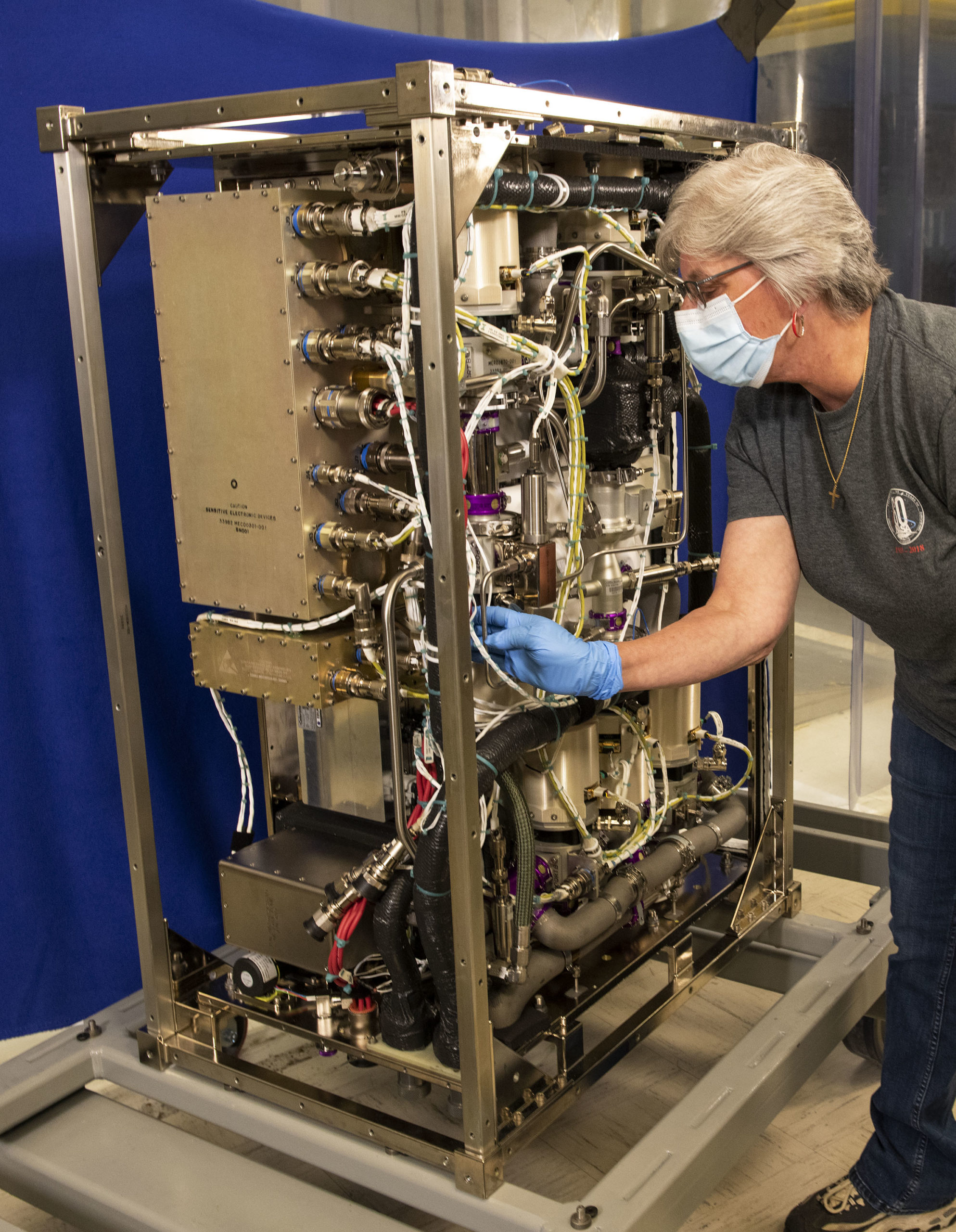
The Redwire Regolith Print (RRP) study will use a simulated regolith as material used the Made In Space Manufacturing Device currently aboard the International Space Station. Regolith is the loose rock and soil found on the surfaces of planetary bodies such as the Moon and Mars. The experiment is to study if it’s possible to use regolith as a material that could be 3D printed into building materials that could be used for habitats or other structures on another celestial body. If structures can be built using materials that are already on the Moon, Mars, or another destination, that would drastically cut down the amount of material required to be launched from Earth for missions to those destinations.
Another technology demonstration payload flying on NG-16, but not staying on the ISS, or burning up inside Cygnus at the end of the mission, will test a new affordable thermal protection system (TPS), or heat shield. The new TPS, if tests go well, can be used on spacecraft returning to Earth from the moon or other destinations where the heat shield must endure temperature of upwards of 3,600 degrees Fahrenheit. To test these new materials, Cygnus will deploy numerous cubesats after departing the space station, but prior to reentering the Earth’s atmosphere. Those cubesats will transmit data back from the Thermal Protection System tests.
Last but certainly not least, the Cygnus spacecraft will carry a new mounting bracket for the space station that will be used to enable the installation of more new solar arrays like the one’s installed a few weeks ago. The new bracket will be attached the space station during a spacewalk planned for late August.

